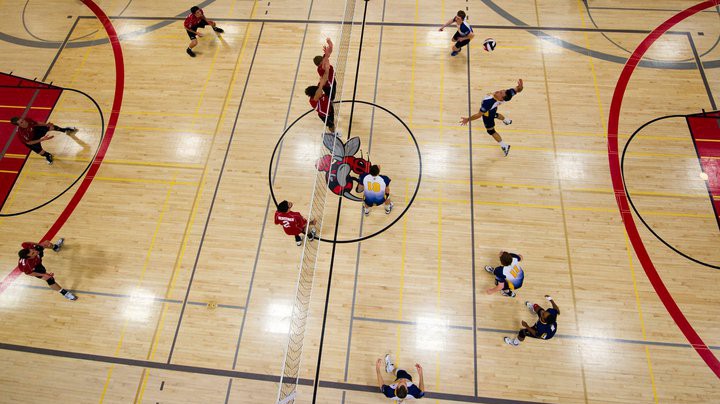It seems to me that back in the day, those volleyball players who wore basketball shoes had no idea what they were doing. Now it seems to be that volleyball players can’t get enough basketball shoes. Whether its Kobe’s, or KD’s, D-Rose or Stephen Curry, volleyball players seem to be enjoying the transition to top end basketball shoes opposed to the volleyball court shoes.
I know basketball shoes used to be big and bulky. Heck, I even have a pair of Lebron’s at home and they make for a good arm day at the gym. Now it seems that basketball has figured it out and moved to make their shoes lighter, yet still durable. The D-Rose Adidas Crazy Lights for example weigh only 9.8 ounces. The new Nike Kobe 9 EM weighs 11.9 ounces. Nike KD VI weighs only 10.6 ounces, making them more appealing to volleyball players so they can fly high without being weighed down with bricks on their feet.
However the new volleyball shoes are right there with the basketball shoes. The Mizuno Wave Lightning RX3 weighs 10.4 ounces. The Mizuno Tornado 8’s weigh 12.3 ounces, and the Asics Gel-Domain 3’s weigh 12.9 ounces. So we can see the volleyball shoe isn’t far behind.
Those few ounces don’t seem like they make much of a difference, but that is where you’d be wrong. It is found that increasing the weight of the shoe by 3.5274 ounces increases the demand of running by 1%. Maybe that seems like a lot of extra ounces to only increase your work load by 1%. Think about it this way though, even the lightest shoe, 9.8 ounces, you take 9.8oz/3.5274oz and you get 2.778. Which means even with those light shoes you have increased your work load by almost 3%. If you decide to go the Asics route, that would be an increased work load of almost 4%. Sure jumping once at at an increased work load, won’t take much effort, and you won’t see a performance decrease. You stretch that over a whole match and you got a much bigger work load increase.
Lets take our leftside player for example. We set him about 30 times in the game, and the other team sets their rightside 30 times a game. We will assume our leftside player is blocking their rightside about half the time. Our player has now jumped 45 times with an increased workload of 3% for a total of 135% (3%x45) increased work load then without the shoes. That is him wearing the lightest shoes. If we had him wear the Asics that would be a 180% increased work load over the game. That is a big difference, and it would make sense to want to decrease the work load as much as possible to increase our endurance.
The other big thing we see in the difference of shoes is basketball shoes have more high top options for greater ankle support. Volleyball shoes have limited options in this category. Making basketball shoes a bit more appealing, however there are always ankle braces or a good old fashioned tape job which does a more then sufficient job.
In summary, basketball shoes vs. volleyball shoes, its not that big of a difference. The biggest factor is the weight. Sure, basketball has the lightest shoe, but on average, the volleyball shoes are right there with them. I think the biggest factor as to why basketball shoes are being popularized is simply their marketing strategy, or the fact that they actually do advertise their product.
Do your research, try different types of shoes, and see what you feel works best for you.
Below is a link to the website I took my numbers from; Dr. Jack Daniels;
http://runsmartproject.com/coaching/2012/02/06/how-much-does-shoe-weight-affect-performance/
